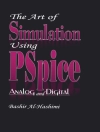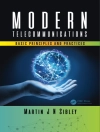Photoalignment possesses significant advantages in comparison with
the usual ‘rubbing’ treatment of the substrates of
liquid crystal display (LCD) cells as it is a non-contact method
with a high resolution. A new technique recently pioneered by the
authors of this book, namely the photo-induced diffusion
reorientation of azodyes, does not involve any photochemical or
structural transformations of the molecules. This results in
photoaligning films which are robust and possess good aligning
properties making them particularly suitable for the new generation
of liquid crystal devices.
Photoalignment of Liquid Crystalline Materials covers
state-of-the-art techniques and key applications, as well as the
authors’ own diffusion model for photoalignment. The
book aims to stimulate new research and development in the field of
liquid crystalline photoalignment and in so doing, enable the
technology to be used in large scale LCD production.
Key features:
* Provides a full examination of the mechanisms of
photoalignment.
* Examines the properties of liquid crystals during
photoalignment, with particular reference made to the effect on
their chemical structure and stability.
* Considers the most useful photosensitive materials and
preparation procedures suitable for liquid crystalline
photoalignment.
* Presents several methods for photoalignment of liquid
crystals.
* Compares various applications of photoalignment technology for
in-cell patterned polarizers and phase retarders, transflective and
micro displays, security and other liquid crystal devices.
Through its interdisciplinary approach, this book is aimed at a
wide range of practising electrical engineers, optical engineers,
display technologists, materials scientists, physicists and
chemists working on the development of liquid crystal devices. It
will also appeal to researchers and graduate students taking
courses on liquid crystals or display technologies.
The Society for Information Display (SID) is an international
society, which has the aim of encouraging the development of all
aspects of the field of information display. Complementary to the
aims of the society, the Wiley-SID series is intended to explain
the latest developments in information display technology at a
professional level. The broad scope of the series addresses all
facets of information displays from technical aspects through
systems and prototypes to standards and ergonomics
Tabela de Conteúdo
About the Authors.
Series Editor’s Foreword.
1. Introduction.
References.
2. Mechanisms of LC Photoalignment.
2.1 Cis-Trans Isomerization.
2.2 Pure Reorientation of the Azo-Dye Chromophore
Molecules or Azo-Dye Molecular Solvates.
2.3 Crosslinking in Cinnamoyl Side-Chain Polymers.
2.4 Photodegradation in Polymide Materials.
2.5 Photoinduced Order in Langmuir-Blodgett Films.
References.
3. LC-Surface Interaction in a Photoaligned Cell.
3.1 Pretilt Angle Generation in Photoaligning Materials.
3.2 Generation of Large Pretilt Angles.
3.3 Anchoring Energy in Photoaligning Materials.
3.4 Stability of Photoaligning Materials Sensitivity to UV
Light.
3.5 Comparison of the Characteristics of Photoalignment Layers
for Different Mechanisms of LC Photoalignment.
3.6 Various Methods for the Experimental Characterization of
Photoalignment Layers.
References.
4. Photoalignment of LCs.
4.1 Vertical LC Alignment.
4.2 Twisted LC Photoalignment.
4.3 Photoalignment of Ferroelectric LC.
4.4 Optical Rewritable LC Alignment.
4.5 Photoalignment with Asymmetric Surface Anchoring.
4.6 LC Photoalignment on Plastic Substrates.
4.7 Photoalignment on Grating Surface.
4.8 Photoalignment of Lyotropic and Discotic LCs.
4.9 Other Types of LC Photoalignment.
References.
5. Application of Photoalignment Materials in Optical
Elements.
5.1 Polarizers.
5.2 Retardation Films.
5.3 Transflective LCD with Photo-Patterned Polarizers and Phase
Retarders.
5.4 Security Applications of Photoaligning and
Photo-Patterning.
5.5 Optical Elements Based on Photoaligning Technology.
References.
6. Novel LCDs Based on Photoalignment.
6.1 Bistable Nematic Displays.
6.2 Photoaligned Liquid-Crystal-on-Silicon Microdisplays.
6.3 Photoaligned Ferroelectric LCDs.
6.4 New Optical Rewritable Electronic Paper.
6.5 Application of Photoalignment in Photonic LC Devices.
References.
7. US Patents Related to Photoalignment of Liquid
Crystals.
7.1 Introductory Remarks.
7.2 List of Patents Patent Classification.
7.3 Analysis and Comments on the Patents.
Index.
Sobre o autor
Vladimir G. Chigrinov obtained his Ph D degree in solid-state
physics from the Shubnikov Institute of Crystallography, USSR
Academy of Sciences, in 1978. In 1988, he defended his doctoral
degree and became a professor at the Shubnikov Institute of
Crystallography, where he was a leading researcher from 1996. He
joined HKUST in 1999 and is currently an associate professor. Since
1974 Professor Chigrinov has published 2 books. 15 reviews and book
chapters, about 150 journal papers, more than 300 conference
presentations, and holds more than 50 patents and patent
applications in the field of liquid crystals. He is a Senior SID
Member, SID Fellow and an Associate Editor of the Journal of the
Society for Information Display.
Vladimir M. Kozenkov graduated from the Moscow Energetic
Institute as a scientist in applied physical optics (laser
department). For 30 years he worked at the Organic Intermediates
and Dyes Institute (NIOPIK) in Moscow. He pioneered research and
development of various organic photosensitive materials for
holography, waveguide, integral and polarization optics,
stereolithography, optical memory, imaging processing, and security
applications. He was the first to discover the phenomenon of
photoinduced birefringence in polyvinyl-cinnamate films in 1977. He
has published more than 100 refereed papers and holds more than 50
patents.
Hoi-Sing Kwok obtained his Ph D degree in applied physics
from Harvard University in 1978. He joined the State University of
New York at Buffalo in 1980 and became a full professor in 1985. He
joined HKUST in 1992 an is currently Director of the Center for
Display Research (href=’http://www.cdr.ust.hk/’>www.cdr.ust.hk). Professor Kwok
has written over 500 refereed publications and holds 40 patents in
laser optics and LCD technologies. He is a Fellow of the OSA, the
IEEE, and the SID.












